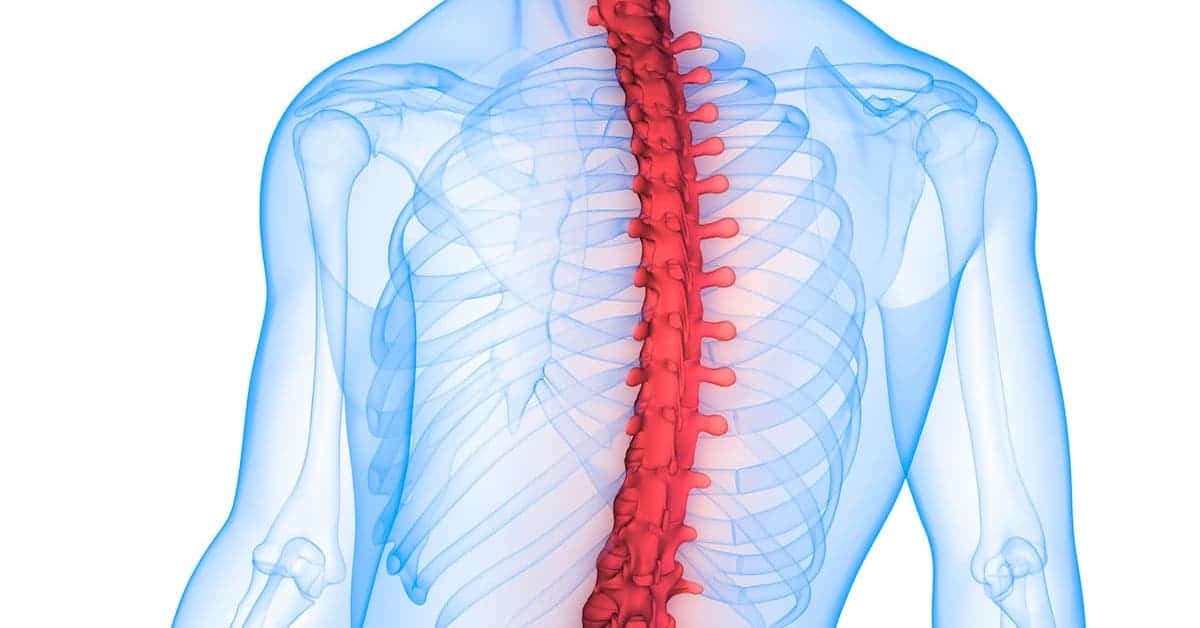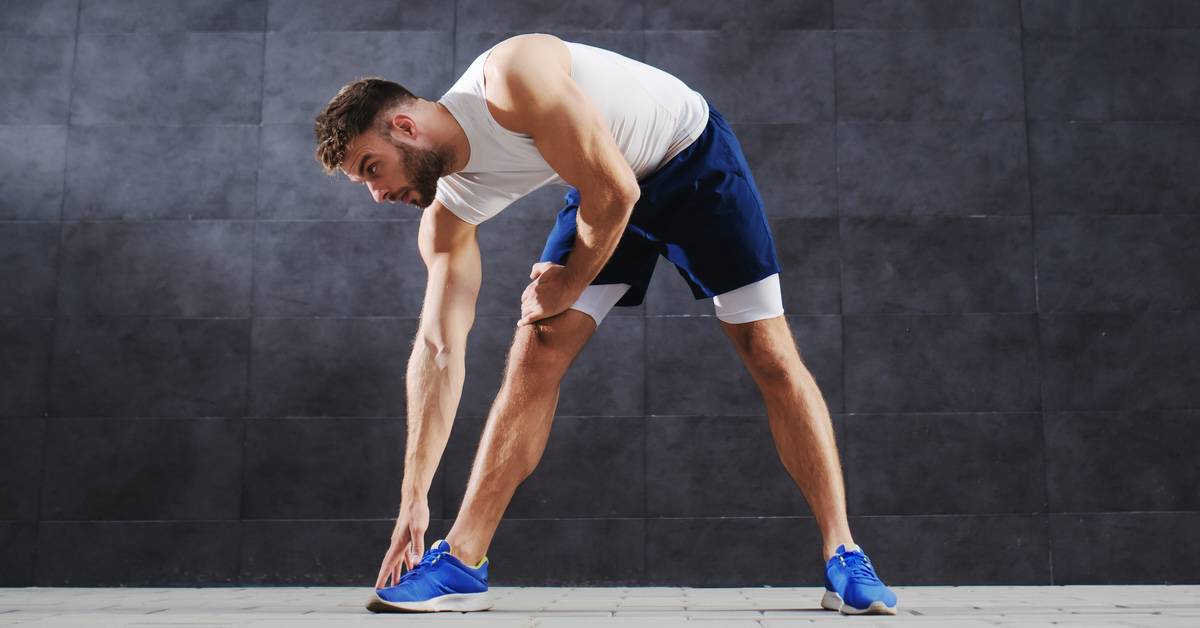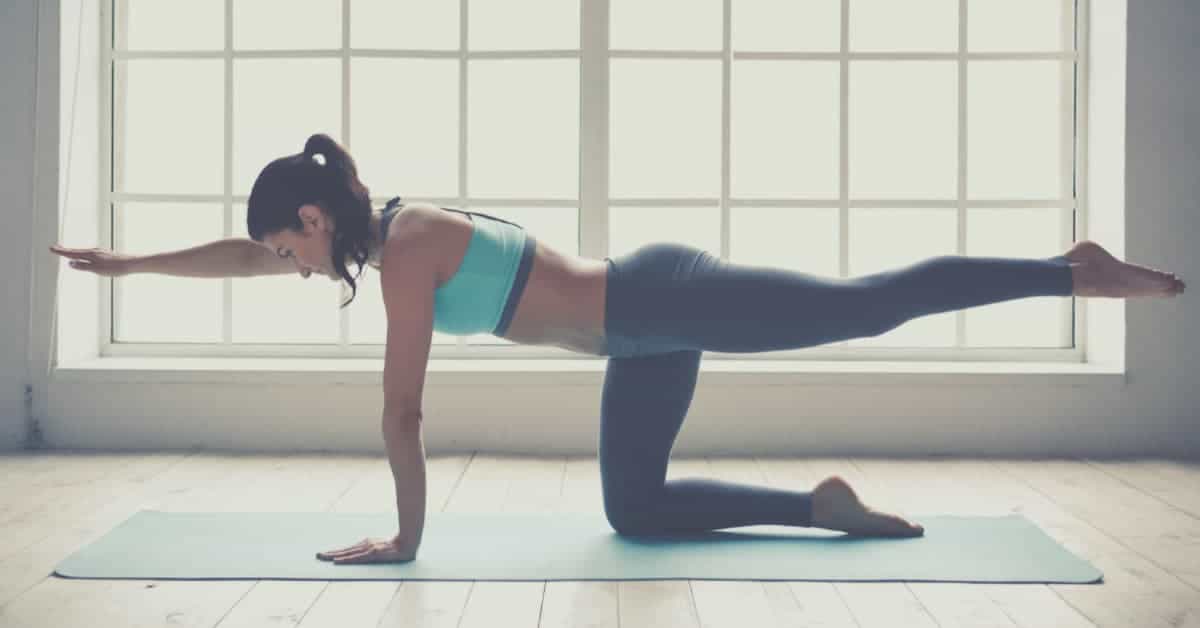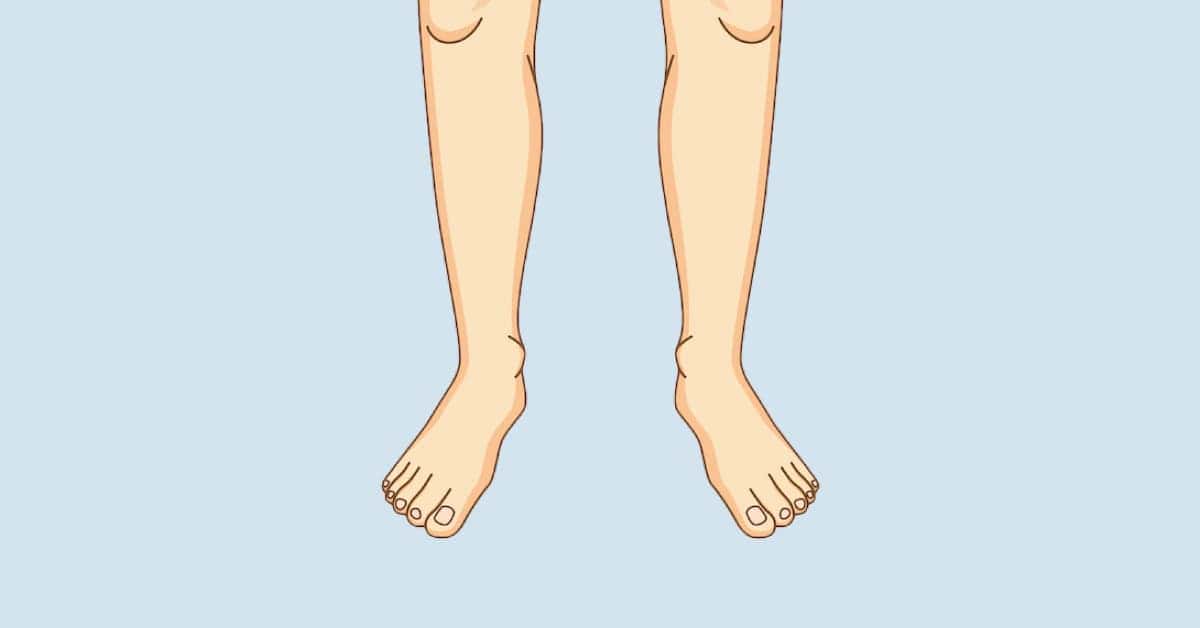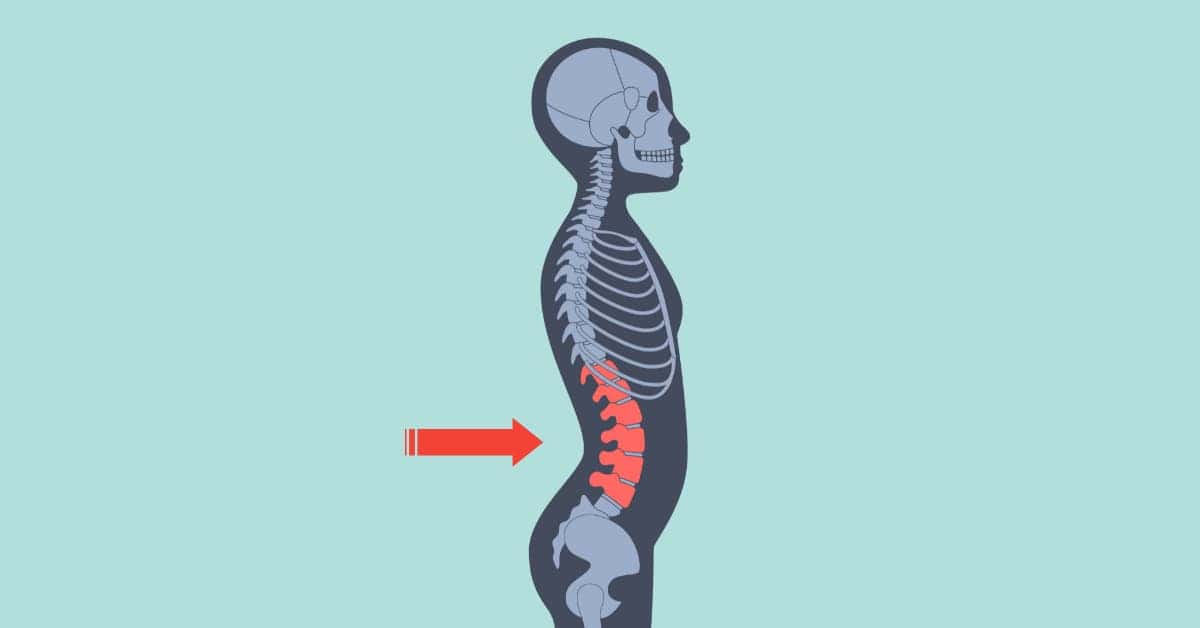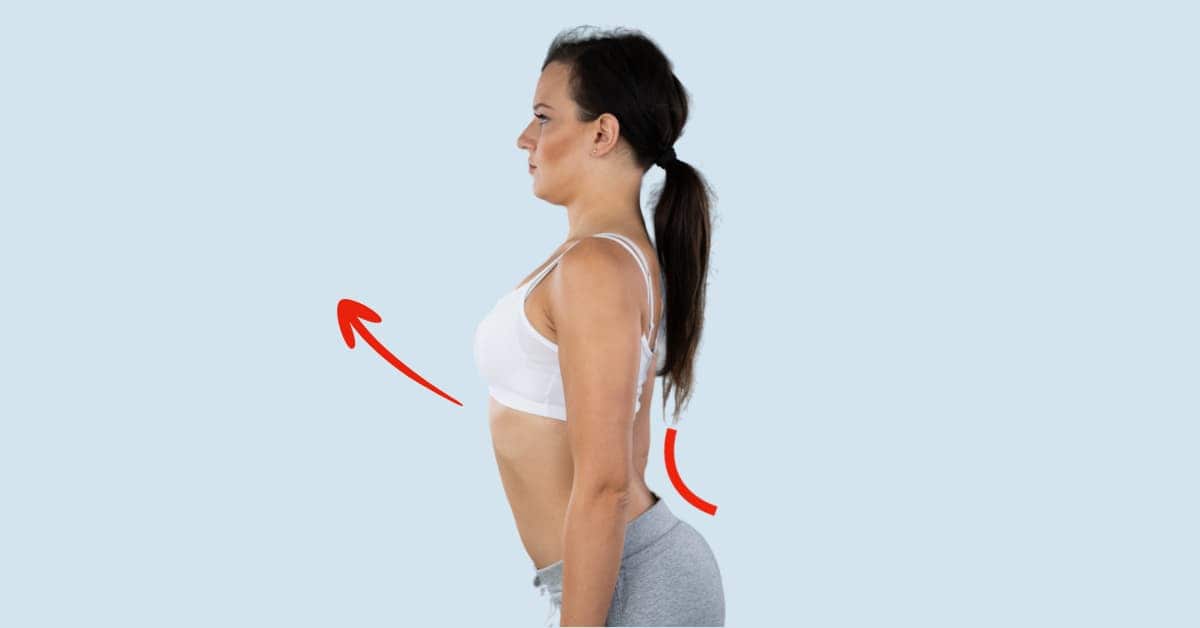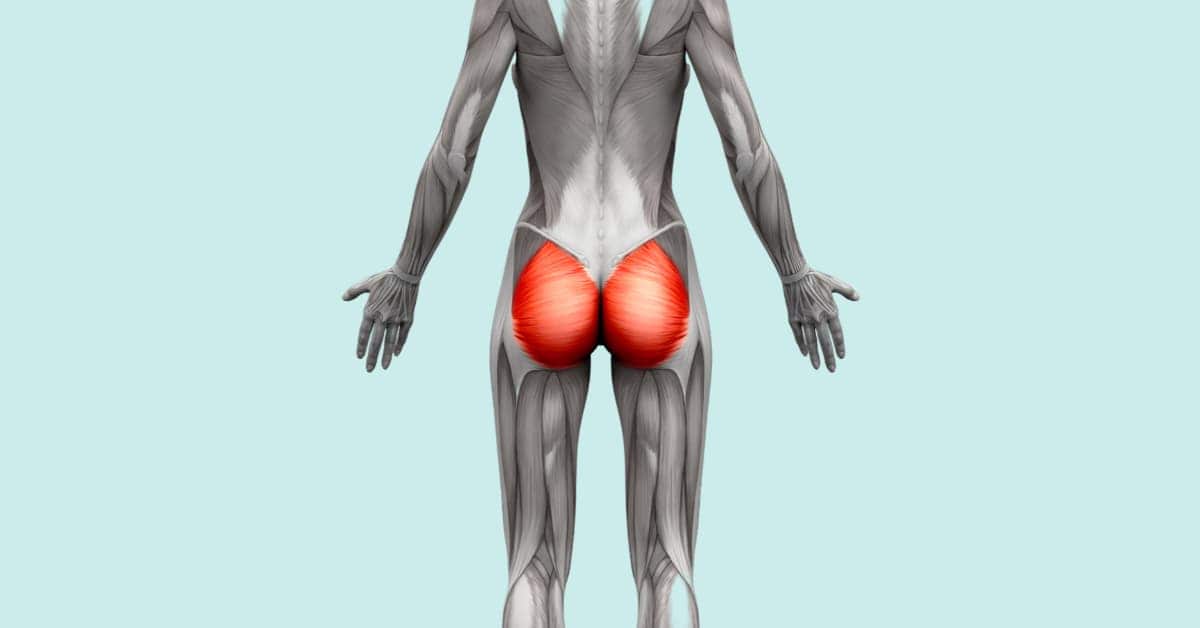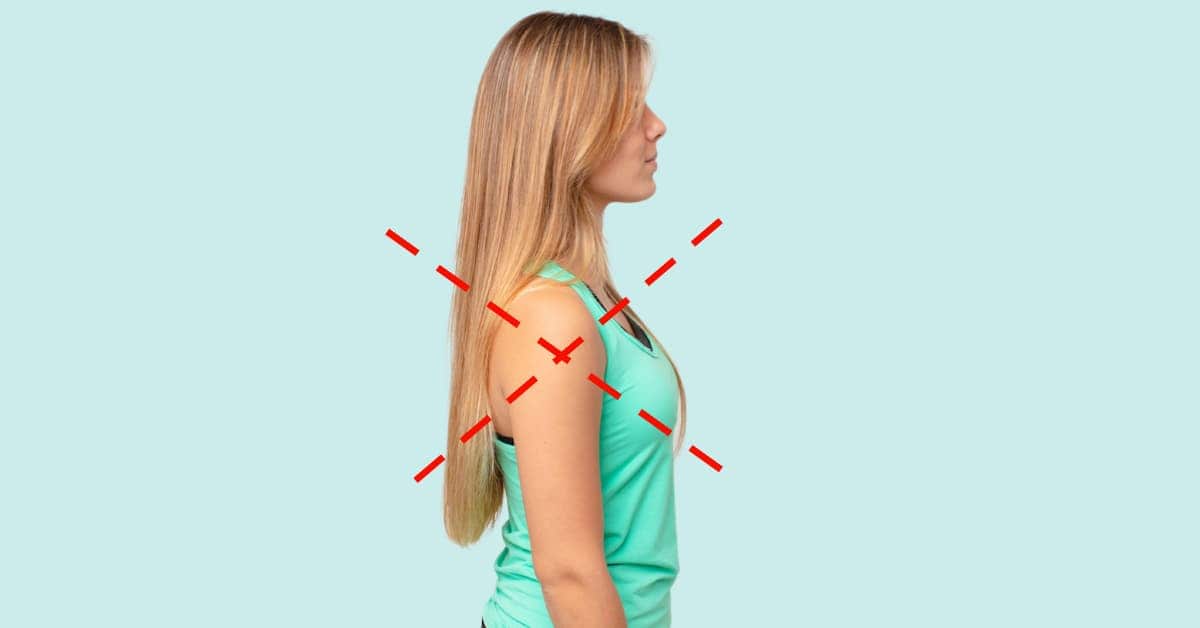Hunchback posture, once primarily associated with ageing, is also increasingly seen in younger individuals. This curvature of the upper back, known as thoracic kyphosis, can be traced back to modern lifestyle habits.
Using smartphones and computers, slouching in chairs, and engaging in these activities for extended periods all contribute significantly to poor posture. While it may seem like bad posture is the new normal, the consequences can be more serious than you might think.
In this article, we’ll explore why hunchback posture should not be ignored and share some simple yet effective exercises to help you straighten up, improving your posture once and for all.
I. What is Hunchback Posture?
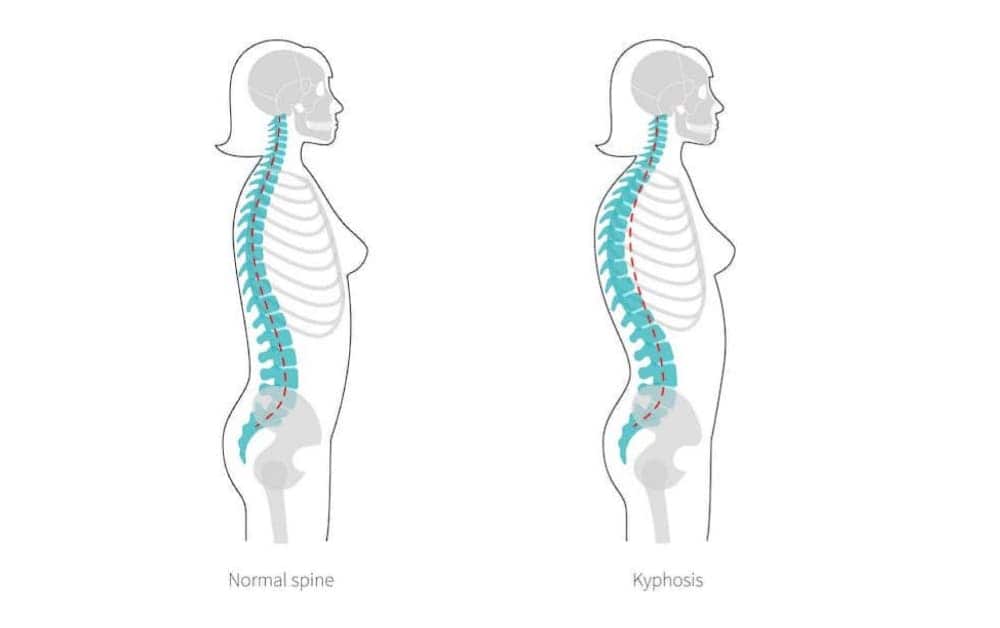
Hunchback posture or thoracic kyphosis is a condition where there is an excessive forward curvature of the upper (thoracic) spine, causing a rounded or hunched appearance of the back.
This postural issue often results from muscle imbalances, poor postural habits, prolonged sitting, or constantly looking down at screens. Over time, hunchback posture can lead to discomfort, pain, and decreased mobility.
However, addressing muscle imbalances and adopting good postural habits can improve hunchback posture and restore a more neutral spine alignment.
II. Causes of Hunchback Posture
A. Muscle imbalances
Hunchback posture typically stems from imbalances in the muscles surrounding the upper back, chest, and shoulders. Tightness in the chest muscles, particularly the pectoralis major and minor, can pull the shoulders forward and contribute to the rounded posture.
Simultaneously, weakness in the upper and middle back muscles, especially the lower and middle trapezius, can make it difficult to maintain proper spinal alignment and an upright posture.
B. Poor postural habits and prolonged sitting
Poor postural habits, such as slouching or rounding the shoulders, can exacerbate hunchback posture by causing the muscle imbalances described earlier.
When we consistently maintain these positions, the chest muscles become tight and shortened, while the upper and middle back muscles become weak and lengthened. Prolonged sitting, especially with poor posture, can further contribute to these imbalances and make it more difficult to maintain proper spinal alignment and an upright posture.
III. Addressing Hunchback Posture
This article will provide a step-by-step plan to address hunchback posture caused by the muscle imbalances just described. The plan includes the following:
- Massaging the tight muscles to help loosen them up.
- Stretching these tight muscles to restore flexibility and length.
- Incorporating mobilization techniques to improve thoracic spine mobility and overall posture.
- Strengthening the weak muscles in the upper and middle back to help keep your back upright.
By following this plan consistently, you can work towards correcting your hunchback posture and reducing the associated discomfort and potential long-term issues.
IV. Massaging Tight Muscles
To perform the techniques in this section, you’ll need a foam roller, a massage ball and a peanut massage ball.
A. Foam rolling the pectoral muscles
- Place a foam roller on the floor perpendicular to your body.
- To target one pectoral muscle, lie face-down with the foam roller under your chest, slightly off-centre.
- Position your arm on the side you’re targeting at a 90-degree angle, palm facing down.
- Gently roll back and forth, applying pressure to the pectoral muscle. Spend extra time on particularly tight or tender spots.
- Switch sides and repeat the process for the other pectoral muscle.
B.Massage ball pec release
Using a massage ball to massage the pecs is far more effective than a foam roller.
- Stand facing a wall with a massage ball or lacrosse ball in hand.
- Place the ball between your chest and the wall, targeting the tight spots in your pectoral muscles.
- Apply gentle pressure and slowly move around to massage the tight areas.
- Spend extra time on particularly tight or tender spots, and switch sides to target the other pectoral muscle.
C. Upper back peanut ball massage
Compressing and massaging the muscle tissue around your thoracic spine can help loosen it up and remove chronic tightness that keeps your spine in its curved position. To do this, you will need a peanut massage ball.
- Place two lacrosse balls side by side, or use a peanut massage tool, on the floor.
- Lie down on your back with the balls placed vertically along your spine, targeting the upper back area.
- Gently roll up and down, applying pressure to your upper back muscles.
This type of massage can be especially intense if you’ve never done it before. Take it slowly and listen to your body’s signals.
V. Stretching Tight Muscles
Once you’ve performed the release techniques, you can move on to stretching.
A. Doorway pec stretch
- Stand in a doorway with one foot in front of the other and your hands resting on the doorframe at shoulder height.
- Bend your front knee and gently lean forward, feeling a stretch in your chest and shoulder area.
- Hold the stretch for at least 30 seconds, then switch sides.
B. Chair-assisted pec stretch
- Kneel down next to a chair or elevated surface with one arm bent at a 90-degree angle, resting on the chair.
- Gently lean your body weight into the stretch, feeling a stretch in your chest and shoulder area.
- Hold the stretch for 30 seconds, then switch sides.
C. Cobra ab stretch
If you are chronically hunched over in a bent position, it’s not uncommon for your abs to become tight. Here’s a stretch to help lengthen them.
- Lie face down, arms by your sides, legs extended
- Place your forehead on the ground and relax your neck
- Lift your chest and head by extending your spine, using your lower and upper back muscles
- Externally rotate your arms, draw your shoulder blades back and down, keeping arms straight
- Hold for 10 seconds, feeling the stretch in your abs, then lower and repeat
VI. Mobilizing the Thoracic Spine
Mobilizing the thoracic spine helps to improve flexibility and range of motion, which is important for correcting hunchback posture.
A. Foam roller mobilization
- Position a foam roller horizontally across your mid to upper back, just below your shoulder blades.
- Lie on the foam roller with your knees bent and feet flat on the floor.
- Place your hands behind your head to support your head.
- Gently lean back over the foam roller, making sure to bend from your mid to upper back area and not from your lower spine.
- Hold the stretch for a few seconds, then return to the starting position. Repeat for 10-15 repetitions.
B. Foam roller spinal alignment
- Place a foam roller on the floor vertically, running parallel to your spine.
- Lie down on your back with the roller under your spine, supporting your head, and your arms resting on the floor at your sides.
- Relax and let gravity do its work, gently stretching your chest and spine. Hold this position for a few minutes.
VII. Strengthening weak muscles
This section focuses on strengthening the back muscles to help pull your shoulders back and help keep you upright.
A. Band pull aparts
- Stand with your feet shoulder-width apart, holding a resistance band
- Extend your arms in front at shoulder height, palms facing down
- Keep your elbows straight and shoulders down, pull the band apart moving your hands to the sides
- Squeeze your shoulder blades together, ensuring movement comes from your upper back
- Slowly return to the starting position and repeat
B. Prone Y raise
- Lie face-down on the floor with your arms extended overhead in a Y position, thumbs pointing up.
- Lift your arms and chest off the floor, squeezing your shoulder blades together.
- Hold for a second, then slowly lower back to the starting position. Repeat for 10-15 repetitions.
C. Superman
- Lie face-down on the floor with your arms extended overhead and legs straight.
- Simultaneously lift your arms, chest, and legs off the floor as high as you can while keeping your neck neutral.
- Hold this position for a few seconds, then slowly lower back to the starting position. Repeat for 10-15 repetitions.
D. Face pulls
- Attach a resistance band to a sturdy object at eye level.
- Hold the ends of the band with both hands, palms facing down.
- Step back to create tension in the band and stand with your feet shoulder-width apart.
- Pull the band towards your face, keeping your elbows high and squeezing your shoulder blades together.
- Slowly return to the starting position and repeat for 10-15 repetitions.
E. Wall angels
- Stand with your back against a wall, feet hip-width apart
- Position your arms at 90-degree angles, with elbows, wrists, and back of hands against the wall
- Keeping contact with the wall, slide your arms up overhead
- Slowly return your arms back to the starting position, maintaining contact with the wall
- Repeat, focusing on engaging your upper back muscles
VIII. Daily Reminders And Habit Building
Most of this post has provided exercises to help reverse thoracic kyphosis, but it’s important to address the root cause of the problem, which is bad posture habits, specifically the daily habits that cause you to hunch.
Here are some tips to help improve your posture:
- Regularly check your posture throughout the day.
- Set reminders to periodically adjust your posture if you spend long hours sitting or working on a computer.
- If you work at a computer all day, position your monitor at eye level to avoid looking down.
- Use an ergonomic chair that supports your lower back and encourages upright sitting.
- Take breaks to stand up and stretch at least once every hour.
- Incorporate the exercises mentioned in this article into your regular workout routine.
- Avoid doing too many abdominal crunches without balancing them with upper back training exercises.
- Focus on strengthening your back muscles and stretching your chest muscles to maintain balance.
- To fix your hunchback posture, you must continue practising good habits and regularly doing posture exercises to improve your posture. It’s a long process, so be patient and persistent.
- If you do not see results after consistently practising these exercises, consider consulting a professional for a personalized assessment and recommendations.
Final Words
In conclusion, hunchback posture, or thoracic kyphosis, is a growing concern among people of all ages due to modern lifestyle habits. Fortunately, by incorporating the exercises and tips in this article, you can work towards correcting your posture and enjoying the numerous benefits of better alignment. Remember to be patient and consistent with your efforts, as it takes time to reverse long-standing postural issues.
If you do not see the desired results or if your condition worsens, don’t hesitate to seek professional help. A personalized assessment and tailored recommendations from a healthcare professional can greatly benefit your journey towards better posture and a more comfortable life.
